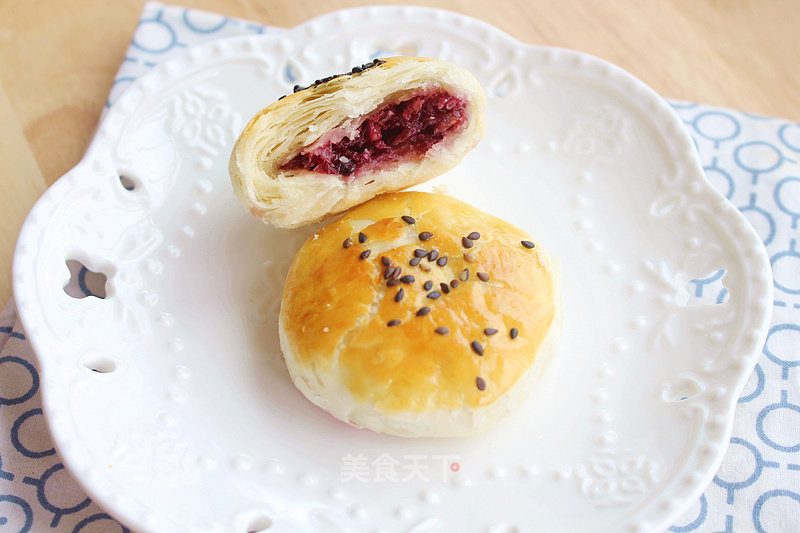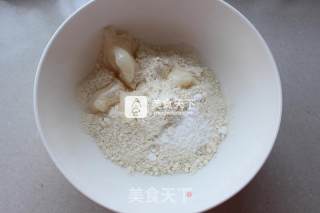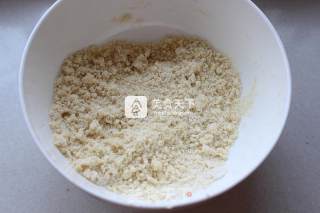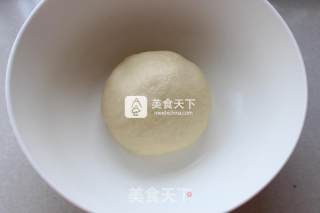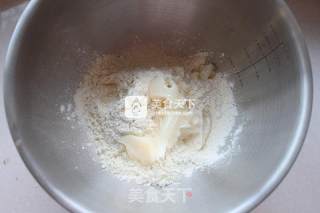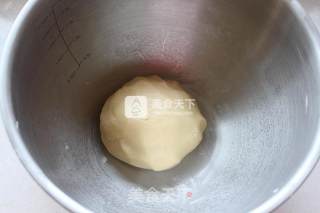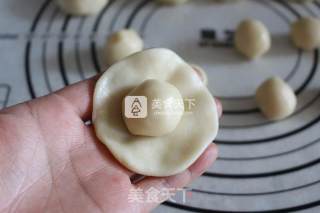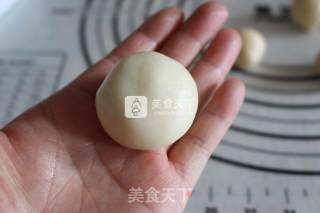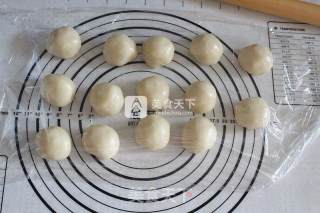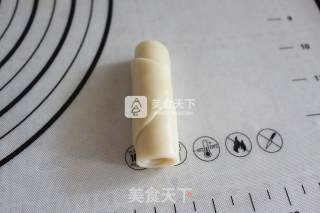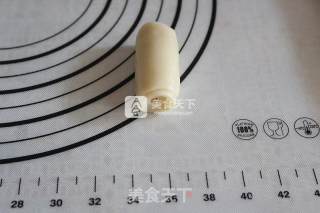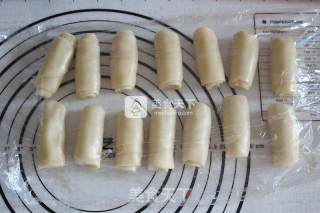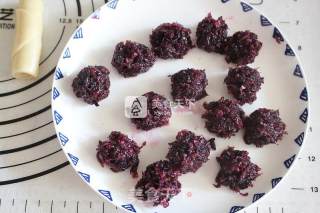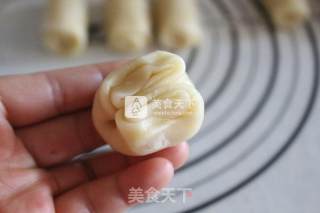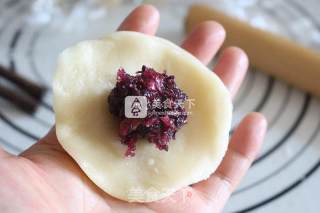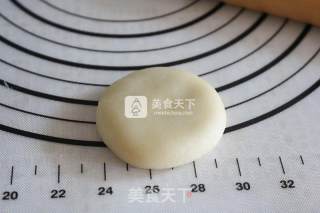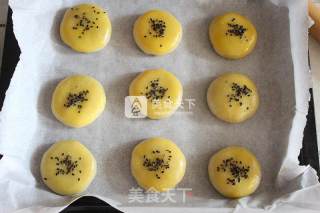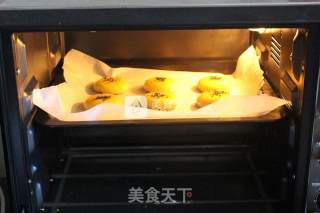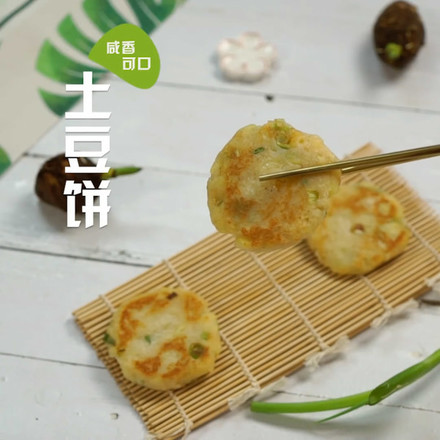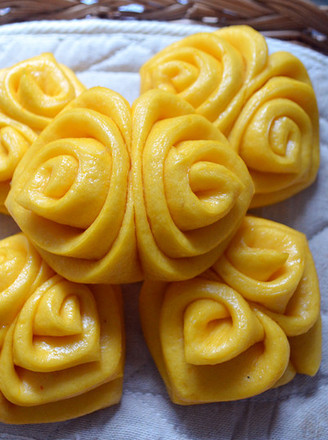#aca烤明星大赛#——rose Flower Cake
1.
Weigh 150g all-purpose flour, 50g lard and 5g powdered sugar;
2.
Knead it into crumbs with your hands;
3.
Add 65g of water to knead the dough, and the oily skin is used to wrap the shortbread, so it needs to have a certain degree of gluten, and it can be kneaded for a while;
4.
Weigh 120g low-gluten flour and 60g lard;
5.
Knead into shortbread dough, put the kneaded water and oily skin dough and shortbread dough in the refrigerator to relax for 30 minutes;
6.
Take out the loose dough, divide the water and oil skin into small doughs of 18g each, and divide the pastry into small doughs of 12g;
7.
Round the water and oil skin, take a piece of pastry dough, and wrap the pastry dough with the water and oil skin;
8.
Close the mouth and squeeze, round;
9.
Wrap all the dough in turn;
10.
Take a piece of dough and roll it out into an oval shape;
11.
Roll up and close up;
12.
Make all the rolls in turn, cover with plastic wrap and relax for 20 minutes;
13.
Take a piece of dough and roll it out again into an oval shape;
14.
Roll it up with the mouth down;
15.
Make all the rolls in turn, cover with plastic wrap and relax for 20 minutes;
16.
When you relax the dough, you can prepare flower sauce. Simply talk about the method of flower sauce. Wash the rose petals and dry the surface water. Roses: mix the sugar and rose petals in a ratio of one to one white sugar and knead it by hand. Put it in a clean, water-free and sterilized jar and let it be sealed and marinated for 2-3 days. The rosette paste is stored at room temperature. The more it is stored, the more fragrant it will be. It is not recommended to shred or break the rose petals. Pickle with petals one by one. The rose jam has the feeling of petals, and the taste is much better~
17.
Take about 15g of rosette paste and knead it into small balls for later use. If the rosette paste is too thin, you can choose to filter out a little bit of the rosette paste juice, or add a proper amount of cooked glutinous rice flour. Mine is just right, so there is no further processing. That is, the filling of the rose flower cake has a very strong floral fragrance;
18.
Take a roll of loose pastry, close it upwards, press down from the middle with your thumb, and tighten the four corners to the middle into a ball shape, and round it;
19.
Flatten it or use a rolling pin to flatten it and wrap it with rosette sauce;
20.
Pinch tightly at the closing, round and squash;
21.
Brush the surface with whole egg liquid twice, sprinkle with black sesame seeds;
22.
Put it in the oven and bake at 180℃ for 20 minutes;
23.
The outer skin is crispy to the point of dregs, and the inside is full of floral fragrance, so delicious!

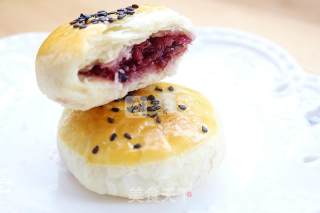
Tips:
1. Water and oily skin is used to wrap the shortbread, so it needs to have a certain degree of gluten, so it is necessary to use all-purpose flour. If there is no all-purpose flour, you can also use a one-to-one ratio of high flour and low flour to mix into all-purpose flour. When kneading the noodles You can knead more appropriately to make the dough form a certain degree of gluten;
2. When making shortcrust pastry, the thinner it is, the more layers there are, the more layers of pastry, but if it is rolled too thin, it will break easily and leak the pastry, so you have to master the degree of rolling by yourself;
3. If there are bubbles when rolling out, you can gently puncture the bubbles with a toothpick and continue the operation;
4. The method of flower sauce. Wash the rose petals and dry the surface water. Roses: mix the sugar and rose petals with white sugar at a ratio of one to one, knead it by hand, and put it into a clean, water-free and disinfected jar Sealed and marinated for 2-3 days. The rosette paste is stored at room temperature. The more it is stored, the more fragrant it will be. It is not recommended to tear or break the rose petals. The rosette paste marinated with one petal by one petal only has slices. The feeling of petals, the taste is much better~
5. The temperature of the oven should be adjusted appropriately according to the temperament of the individual oven;

